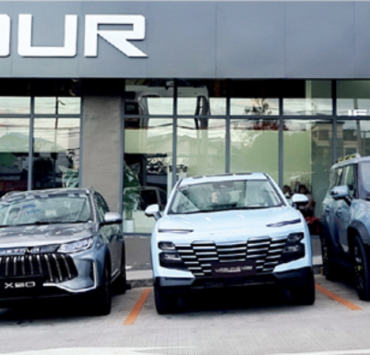Second wind
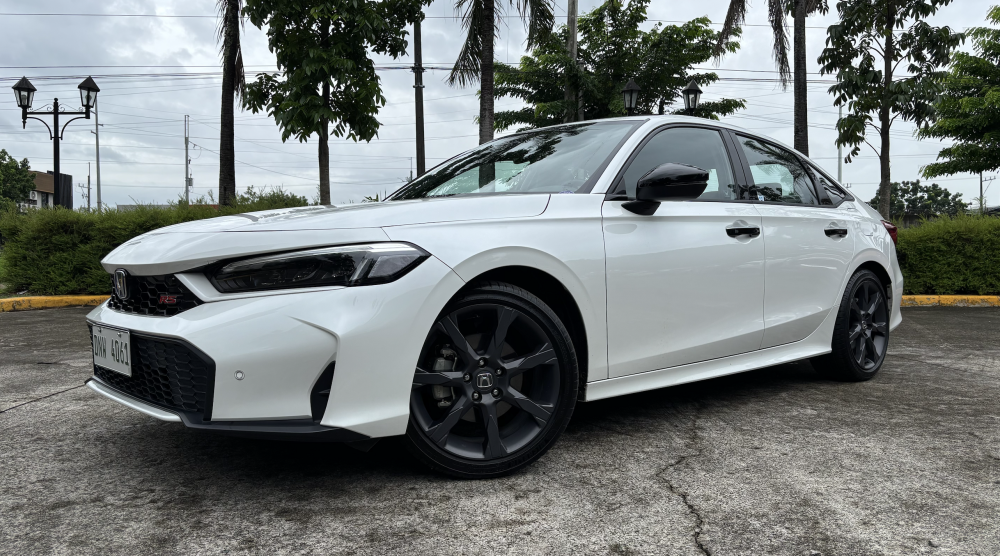
It is inevitable in our lifetimes that things come and go.
The baggy jeans and mountains of hair gel that we used to wear when I was a kid are now relegated to the annals of history. And the ballads that defined Original Pilipino Music (OPM) for decades, penned by genius minds like Ryan Cayabyab, Louie Ocampo and George Canseco, are now nostalgia trips in a world of fun BINI dance hits.
It’s much the same with cars – the four-door sedan has long been out of fashion, with a new crossover seemingly popping up every month. Why, then, did Honda Cars Philippines Inc. bother bringing in the Honda Civic RS e:HEV?
And why the hell did the Japanese carmaker make this electrified four-door so breathtakingly good?
Sportier face
All Civics sold after the launch event at 2024 Philippine International Motor Show (PIMS) feature a revamped face.
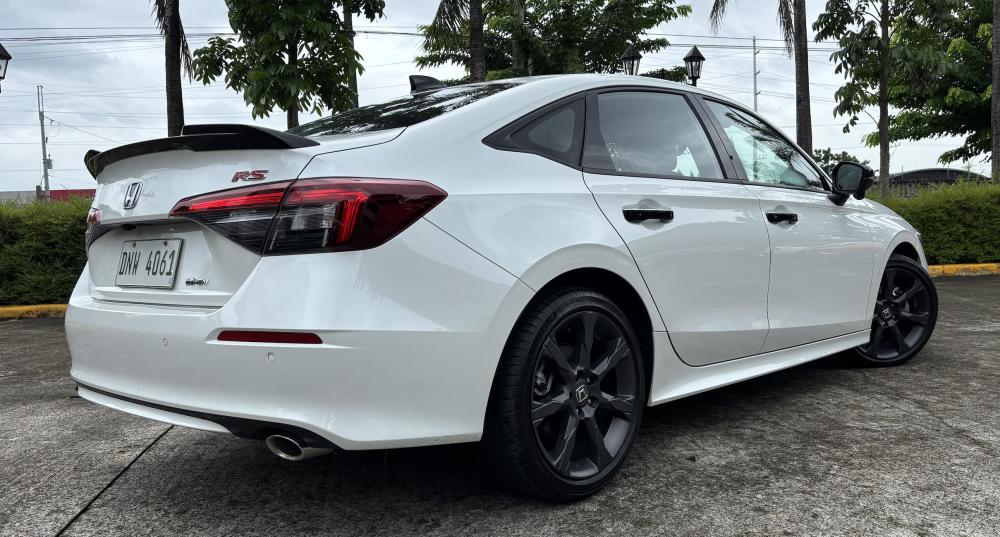
The most notable differences include the cleaner lower bumper and the body-colored headlight surrounds that make this hybrid look more like its Type R sibling. Meanwhile, all RS models gets gloss-black door handles and side mirrors that complement the black, 7-spoke, 18-inch alloy wheels that are exclusive to the e:HEV.
The traditional rear end is spiced up by the gloss-black trunk spoiler and wraparound LED taillights, while the single exhaust pipe marks this out from the twin tips in the non-hybrid Civics. On the whole, the Civic uses its low height and considerable length to express a sleek style that is impossible with tall crossovers.
Racy cockpit
Being inside the Civic e:HEV was a bit of nostalgia trip, too.
The supportive, electrically adjustable driver’s seat is low to the ground, almost akin to sports cars like the Subaru BRZ or its distinguished predecessor, the Honda Civic SIR. Meanwhile, the clean dashboard combines red accents, piano-black trim and silver hexagonal louvers for a sporty flavor, while the soft-touch materials give it a premium feel.
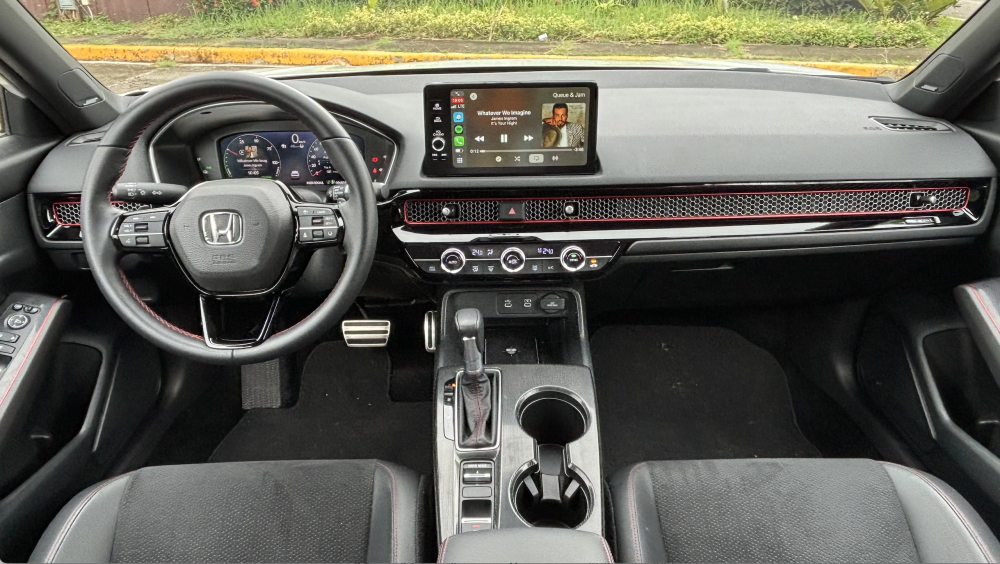
Yet another thing that seemed like a throwback was the simplicity of the controls for the powerful dual-zone climate-control system – these buck the hateful trend started by Chinese cars of burying everything in a single screen. Speaking of which, all RS Civics get a 10.2-inch digital gauge cluster and a 9-inch touchscreen with wireless Apple CarPlay and Android Auto.
Although the 12-speaker Bose surround-sound system is quite nice, the rear-view and LaneWatch cameras are rather blurry. I would also have preferred this enormous cabin to have the sumptuous leather upholstery from the CR-V e:HEV, while the hard plastics on the rear door cards are unbecoming for a vehicle in this price range.
Stunning performance
Where this hybrid Civic blows almost every car this side of a Porsche into the weeds is how glorious it is to drive.
In place of the typical 1.5-liter turbo engine is a naturally aspirated 2.0-liter, twin-cam, 16-valve inline-4 gasoline engine mated to an electric motor. Combined output is 181 horsepower and 315 Newton-meters of torque, coursed through an electrical continuously variable transmission.
I wrote in my CR-V e:HEV review that this electrified powertrain felt underwhelming in such a heavy crossover – not so in this lighter sedan body, where the wallop of torque, balanced powerband and superb throttle response make this Civic feel like it has an old-school, large-displacement gasoline engine.

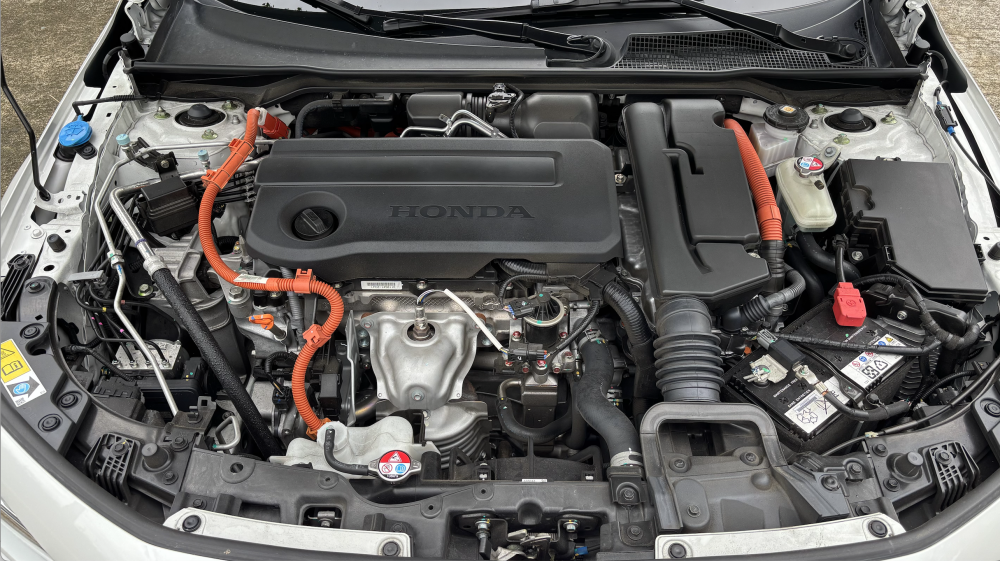
To my surprise, I liked this feeling more than the already-excellent power from the turbocharged Civic that I reviewed. To my delight, the well-weighted and direct steering, the powerful brakes with exemplary pedal feel and the supple, taut suspension made this big car feel like a sports car, wherever I drove it.
And to my astonishment, it got 15 to 18 kilometers per liter in the city and 18 to 21 kilometers per liter on the expressway – both numbers could soar higher if you use the Electric Vehicle (EV) mode more frequently. The standard Honda SENSING active-safety suite really is the icing on the cake here.
Overall, I preferred driving the Civic e:HEV to the Civic Type R – you get around 80 percent of the performance and driving feel, without the punishing ride and the pathetic range. Only the rather large turning radius and occasional harshness from the sticky 235/40-series Michelin Pilot Sport 4 tires keep this hybrid sedan from being totally perfect.
Simply the best
The idiomatic expression “second wind” comes from the notion that a storm picks up speed in between periods of quiet.
The fact that it refers to “renewed energy” is only fitting for the 2025 Honda Civic RS e:HEV – its hybrid-electric powerplant enhances everything that made this sedan so great since it was launched locally in 2021. You now get punchier performance and awe-inspiring fuel economy in a practical and safe car that doesn’t have the awkward driving dynamics of a tall crossover.
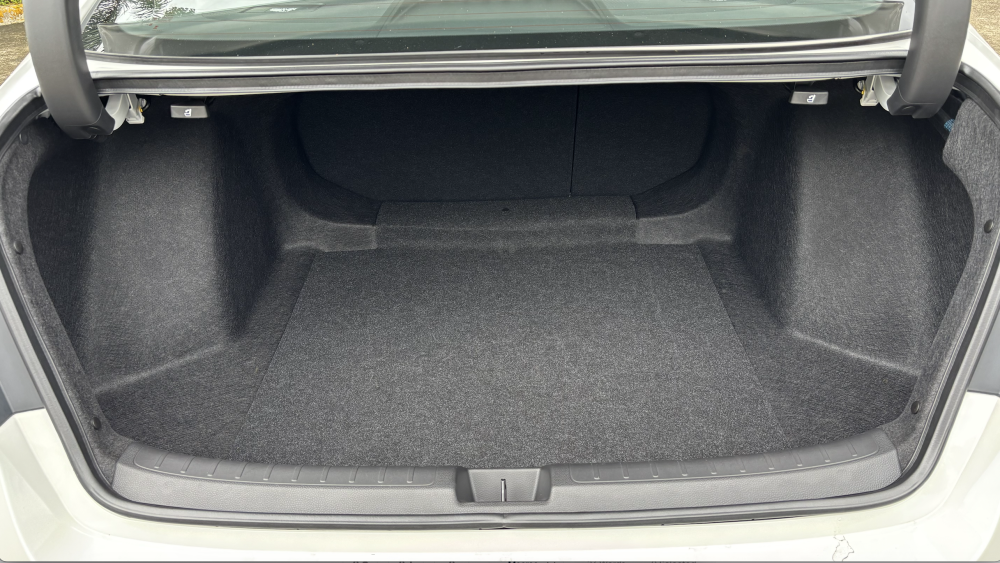
At P1,990,000, it is considerably more expensive than rivals like the P1,198,000 BYD Seal 5 DM-i Premium, the P1,680,000 Hyundai Elantra HEV Premium and the P1,746,000 Toyota Corolla Altis GR-S HEV, along with the hybrid crossovers like the P1,549,000 BYD Sealion 6 DM-i. But for once, not a single one of these cars comes close.
That’s because the Civic RS e:HEV isn’t an afterthought made better by a haze of teary-eyed nostalgia – it’s a headstrong and forward-thinking way of interpreting the front-wheel-drive sports sedan. And I fervently hope that as we all enter the age of electrification, more and more cars can be like this.
I’m totally, totally sold.















